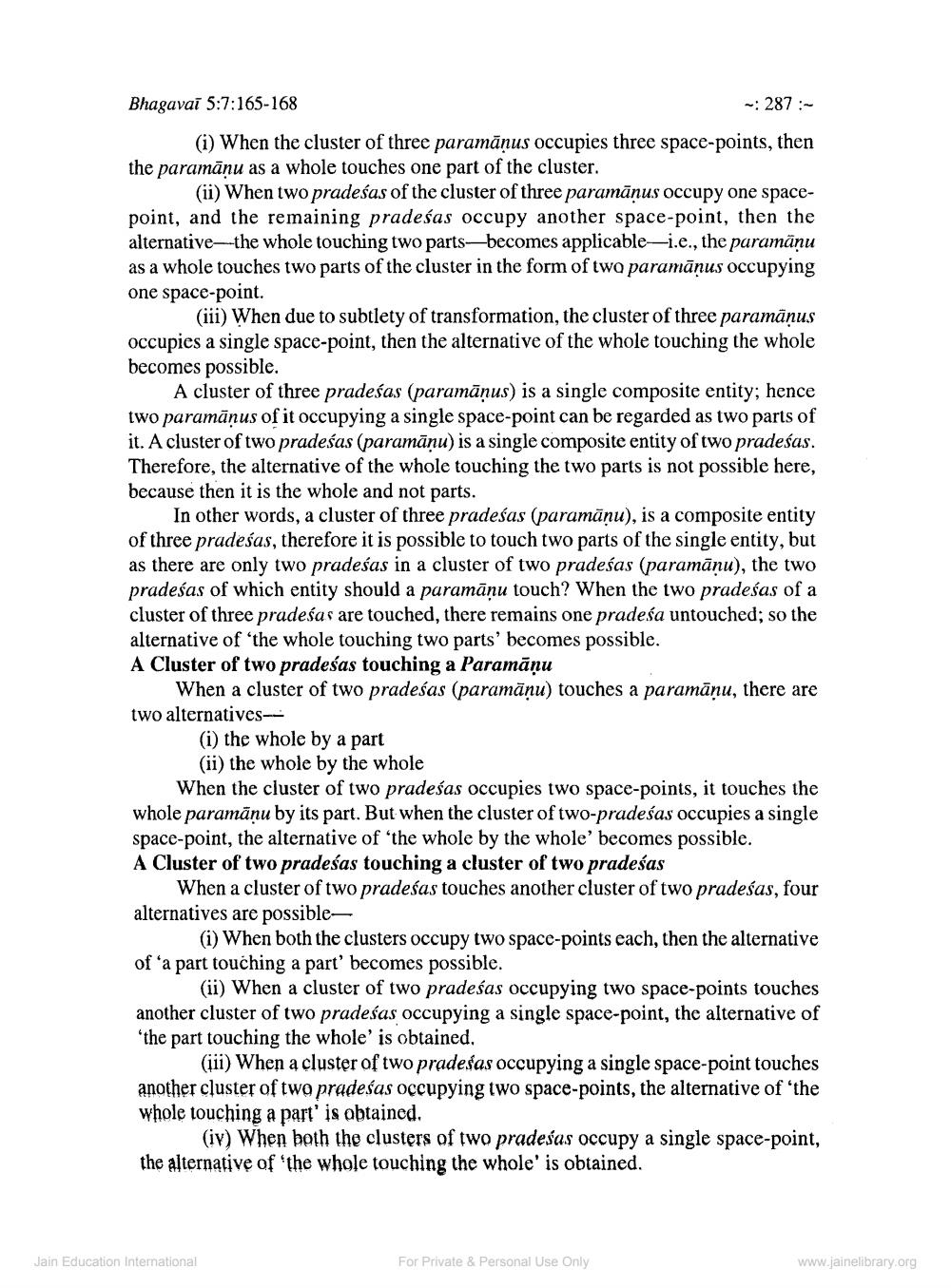________________
Bhagaval 5:7:165-168
~: 287:
(i) When the cluster of three paramāņus occupies three space-points, then the paramāņu as a whole touches one part of the cluster.
(ii) When two pradeśas of the cluster of three paramanus occupy one spacepoint, and the remaining pradešas occupy another space-point, then the alternative--the whole touching two parts becomes applicable-i.c., the paramāņu as a whole touches two parts of the cluster in the form of two paramāņus occupying one space-point.
(iii) When due to subtlety of transformation, the cluster of three paramaņus occupies a single space-point, then the alternative of the whole touching the whole becomes possible.
A cluster of three pradeśas (paramāņus) is a single composite entity; hence two paramāņus of it occupying a single space-point can be regarded as two parts of it. A cluster of two pradeśas (paramāņu) is a single composite entity of two pradesas. Therefore, the alternative of the whole touching the two parts is not possible here, because then it is the whole and not parts.
In other words, a cluster of three pradeśas (paramāņu), is a composite entity of three pradesas, therefore it is possible to touch two parts of the single entity, but as there are only two pradešas in a cluster of two pradeśas (paramāņu), the two pradeśas of which entity should a paramāņu touch? When the two pradesas of a cluster of three pradeśas are touched, there remains one pradesa untouched; so the alternative of 'the whole touching two parts' becomes possible. A Cluster of two pradeśas touching a Paramāņu
When a cluster of two pradeśas (paramāņu) touches a paramāņu, there are two alternatives
(i) the whole by a part
(ii) the whole by the whole
When the cluster of two pradeśas occupies two space-points, it touches the whole paramāņu by its part. But when the cluster of two-pradeśas occupies a single space-point, the alternative of "the whole by the whole' becomes possible. A Cluster of two pradeśas touching a cluster of two pradeśas
When a cluster of two pradesas touches another cluster of two pradesas, four alternatives are possible
(i) When both the clusters occupy two space-points each, then the alternative of 'a part touching a part' becomes possible.
(ii) When a cluster of two pradeśas occupying two space-points touches another cluster of two pradeśas occupying a single space-point, the alternative of 'the part touching the whole' is obtained.
(iii) When a cluster of two pradefas occupying a single space-point touches another cluster of two pradeśas occupying two space-points, the alternative of 'the whole touching a part' is obtained.
(iv) When both the clusters of two pradeśas occupy a single space-point, the alternative of 'the whole touching the whole' is obtained.
Jain Education International
For Private & Personal Use Only
www.jainelibrary.org




